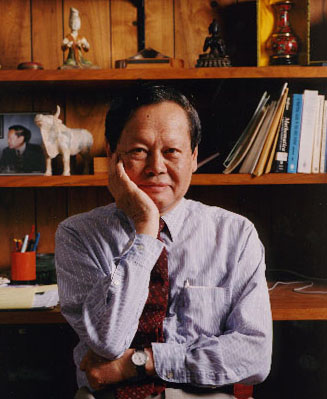Research Highlights
Astronomers Sharpen the Universe’s Expansion Rate, Deepening a Cosmic Mystery
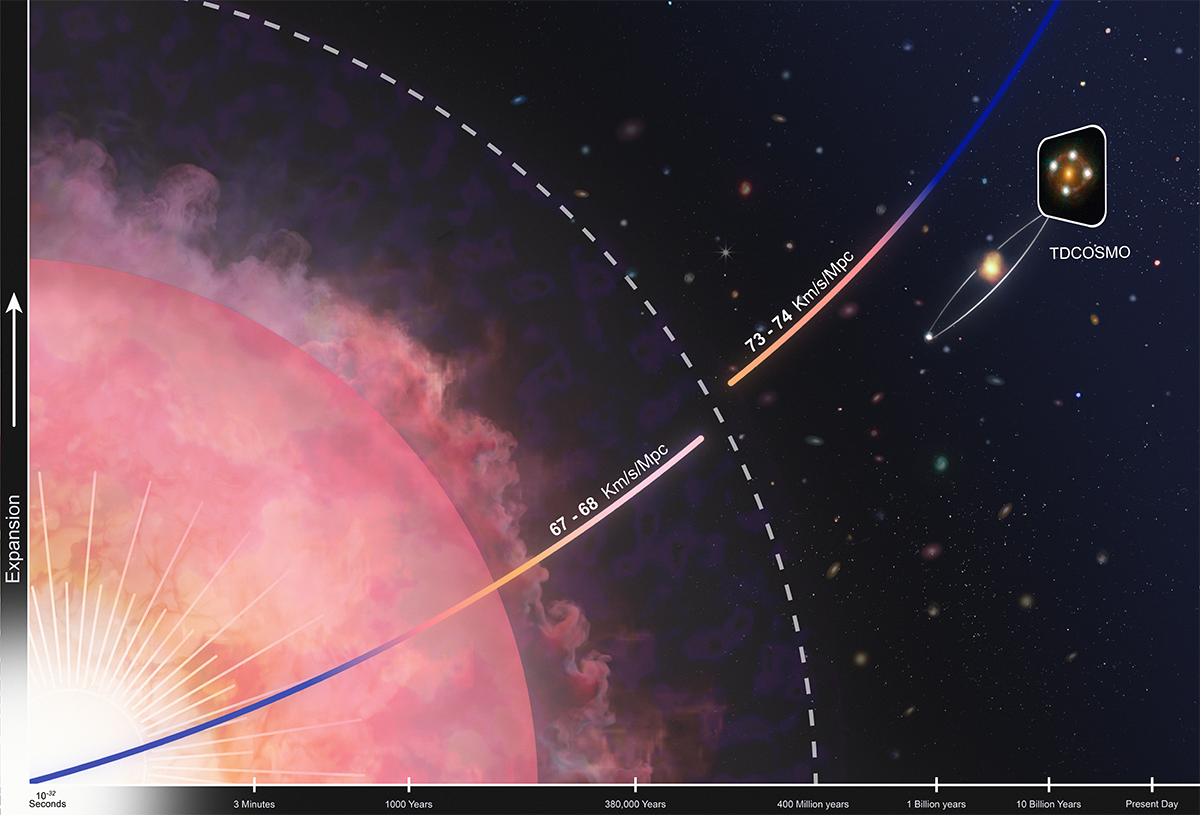
A team of astronomers using a variety of ground and space-based telescopes including the W. M. Keck Observatory on Maunakea, Hawaiʻi Island, have made one of the most precise independent measurements yet of how fast the universe is expanding, further deepening the divide on one of the biggest mysteries in modern cosmology.
Using data gathered from Keck Observatory’s Cosmic Web Imager (KCWI) as well as NASA’s James Webb Space Telescope (JWST), the Hubble Space Telescope (HST) the Very Large Telescope (VLT), and European Organisation for Astronomical Research in the Southern Hemisphere (ESO) researchers have independently confirmed that the universe’s current rate of expansion, known as the Hubble constant (H₀), does not match values predicted from measurements from the universe when it was much younger.
The finding strengthens what scientists call the “Hubble tension,” a cosmic disagreement that may point to new physics governing the universe.
“What many scientists are hoping is that this may be the beginning of a new cosmological model,” said Tommaso Treu, Distinguished Professor of Physics and Astronomy at the University of California Los Angeles and one of the authors of the study published in Astronomy and Astrophysics.
“This is the dream of every physicist. Find something wrong in our understanding so we can discover something new and profound,” added Simon Birrer, Assistant Professor of Physics at the Stony Brook University and one of the corresponding authors of the study.
The team’s measurement currently achieves 4.5% precision — an extraordinary feat, but not yet enough to confirm the discrepancy beyond doubt. The next goal is to refine that precision to better than 1.5%, a level of certainty “probably more precise than most people know how tall they are,” noted Martin Millon, postdoctoral fellow at ETH Zurich and the third corresponding author of the study.
James Webb Space Telescope Looks Within for Dark Matter
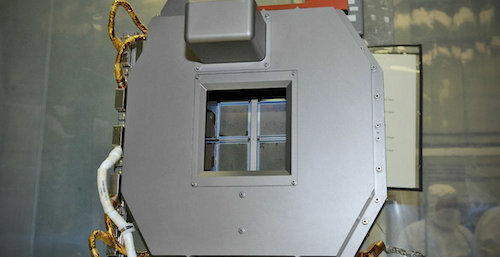
Since its launch in 2021, the JWST has observed not just galaxies at the edge of the visible Universe but also our nearest stellar neighbor, Proxima Centauri. Now Peizhi Du at the University of Science and Technology of China, formerly a postdoctoral researcher at Stony Brook, as well as Stony Brook Professor Rouven Essig and his recent graduate student Hailin Xu, and NASA scientist Bernie Rauscher, have used the JWST to look for objects that are even closer. By analyzing ostensibly blank calibration images, the team sought signs of dark matter within the telescope itself. Finding none, the researchers put constraints on the existence of dark matter that interacts strongly with ordinary matter.
The team considered one proposed type of dark matter that interacts with electrically charged particles. The strength of this interaction is orders of magnitude feebler than that of electromagnetism but is still sufficiently large that it would hinder the particles’ passage through Earth’s atmosphere. Such dark matter is therefore expected to be especially hard to spot using typical ground-based experiments. Instead, space-based instruments offer a promising alternative.
The team analyzed images acquired when JWST’s near-infrared spectrograph was covered. These images were obtained so that researchers could characterize the instrument’s noise. Even so, although the sensor was protected from external photons, pixels could still record cosmic rays and internally generated radiation. Du and colleagues filtered out those events in the hope of finding a residual signal caused by strongly interacting dark matter. The absence of such a signal implies that this form of dark matter contributes no more than 0.4% to the Universe’s total.
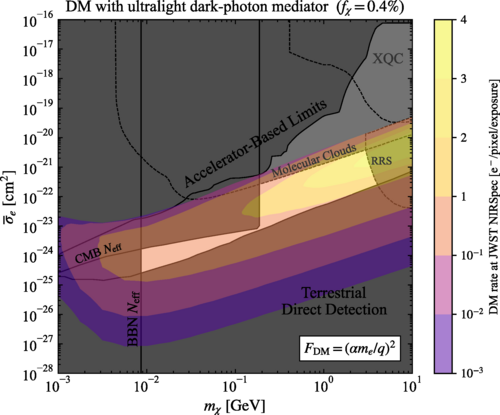
This work was published in PRL, selected as an Editor's Suggestion and featured in Physics.
Stony Brook Simulations Help Explain Lightning’s Mysterious Origins
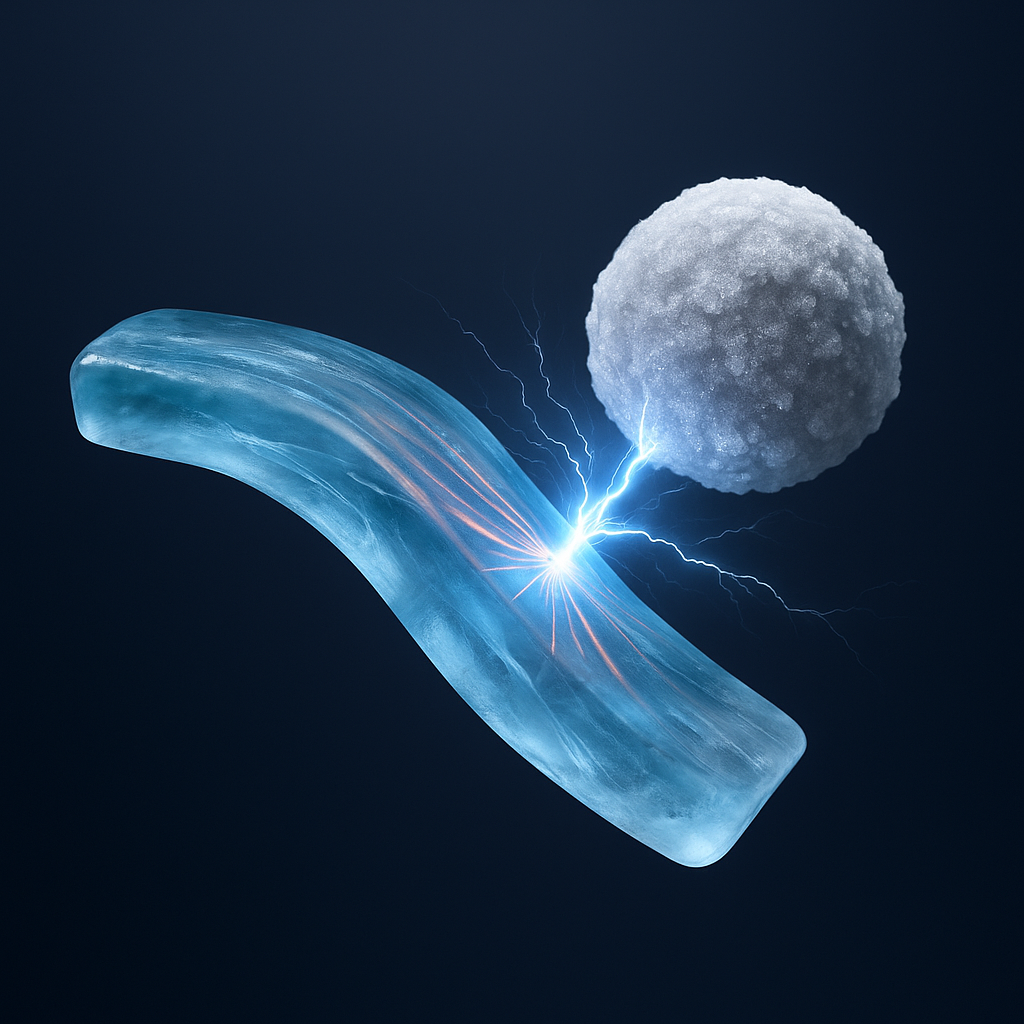
A recent study in Nature Physics reveals how ordinary ice can generate electricity, providing crucial insight into the origins of lightning. It was discovered that ice exhibits strong flexoelectricity—an electromechanical effect that occurs when the material is bent.
At Stony Brook University, PhD student Anthony Mannino, working under the supervision of Professor Marivi Fernandez-Serra in the Department of Physics & Astronomy and the Core Faculty at the Institute for Advanced Computational Science (IACS), spearheaded the theoretical side of the project.
The international collaboration was led experimentally by Professor Gustau Catalan and Dr. Xin Wen at the Institut Català de Nanociència i Nanotecnologia (ICN2) in Barcelona.
Using the Seawulf supercomputing cluster, Mannino performed large-scale quantum simulations that revealed how the surface of ice can undergo subtle ferroelectric ordering at low temperatures. This ordering amplifies the flexoelectric effect and explains how collisions between ice particles and graupel in thunderclouds can generate the massive charge separations that lead to lightning.
“Helping to facilitate an innovative discovery like the origin of lightning is exciting, extremely rewarding, and very much in keeping with the fundamental role of computation in contemporary science,” said Professor in the Department of Physics and Astronomy and Deputy Director of the Institute for Advanced Computational Science (IACS) Alan Calder. “As this study shows, with the combination of clever investigators and advanced computing the sky, or lightning shooting through it at least, is literally the limit.”
Research Groups and Connected Research Centers

